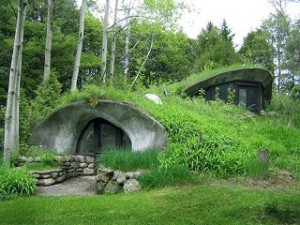From Guest Blogger Ash: Three Ways to Green Up Your Home

The degradation of our environment is responsible for rising sea levels, the extinction of many species, higher temperatures, and more — which eventually is going to affect the way we live as humans.
It’s easy to shirk off responsibility and blame this sad state of affairs on central authorities. However, the fact is that our everyday lifestyle is as much at fault for not considering environmental repercussions. Most people’s homes today are far from energy-efficient, with the EIA claiming that the average annual electricity consumption for a U.S. residential utility customer was 10,812 kilowatt hours.
One of the major misconceptions about going green is that it requires significant expense and radical change. This is not entirely true; green renovations can be implemented at any scale you wish, thus lowering your energy costs and environmental impact. If you’re in for a total revamp, then many organizations today allow for home improvement loans to fund your renovations.
With an increasing number of people becoming concerned about the environment, green renovations can actually add value to your house, should you want to resell. Greening up your home should be looked at as an investment, since the money you spend initially will yield great returns in the long-term, with savings on utilities and other bills while also keeping to environmental impact to an absolute minimum. Here are three ways to make your home more green:
Rainwater Harvesting
On average, a person flushes a toilet about 140,000 times in their lifetime. That means that with a typical toilet using 2 gallons per flush, one person will end up using 280,000 gallons of water to flush away their bodily waste! This is water that has been treated and filtered at an expense. Since the water needed to flush your toilet doesn’t have to be as clean as the water you drink, think about how much more sense it would make if non-potable water used was rainwater, that you yourself could harvest. With drought conditions growing, rainwater harvesting is a great alternative to provide a supply of water. A rainwater harvest system is something you can personally put into place or have a contractor install. Though it may require some effort, rainwater harvesting is a wonderful way to save water and money!
Energy Efficient Lighting
More often than not, we don’t realize how much energy we are consuming by leaving lights on, or by forgetting to unplug chargers for long periods of time. Replacing traditional incandescent light bulbs with light-emitting diodes (LED) or compact fluorescent light bulbs (CFL) will save lots of energy. LEDs and CFLs will last five times longer than incandescent light bulbs;that’s a substantial amount of time. The money you would save by switching out your incandescents for greener options is also significant, making for a win-win situation.
Solar Power
One of the best options for a green home is to switch to solar power, if you are in a position to do so. While this may seem like a time-consuming task, solar panel installation is a one-time affair, the benefits of which can be reaped as long as the sun continues to shine!
Solar panels work by collecting and converting sunlight into energy that can be used to power everything from your refrigerator to your air conditioner. This might lead you to wonder about what happens during nighttime, or on a particularly cloudy day, where the sun doesn’t shine bright. Well, the great thing about solar panels is that when enough sunlight isn’t collected, power is automatically drawn from the grid, ensuring that your appliances are powered and working whenever you need them.
Research shows that people have saved between $44 to $187 in their first year of using solar panels. Subsequently, this the lessened the load on the power grid and led to a decrease in energy wastage. Harnessing the natural power of the sun does wonders for the environment, relieving a lot of the stress caused by traditional electricity production methods.
All in all, it’s worth the investment to green up your home. In this time of environmental turmoil, we need to do all we can to make sure our negative impact on the environment is minimized. Changing our everyday habitat to become more sustainable is only the first step towards a better future.
